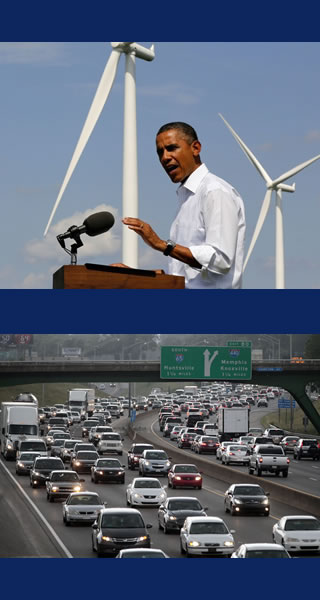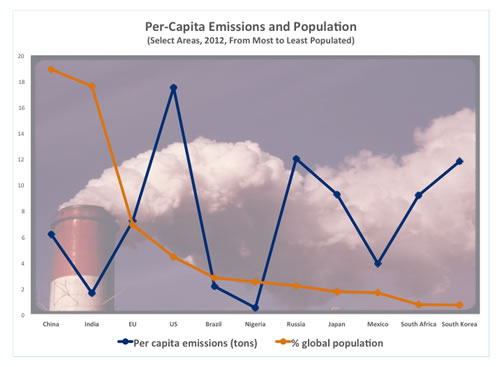However Welcome, Overdue US Climate Plan Falls Short
However Welcome, Overdue US Climate Plan Falls Short

DELHI: The US climate action plan, release in June, signals that after nearly three decades of climate change inaction, the government has decided that the warming trends are real and the US must act. US ambition could encourage other countries to benchmark their performance to cut greenhouse gas emission. The plan’s effectiveness provides a roadmap for other countries so that the world can indeed move towards a low-carbon future – growth but without pollution.
Unfortunately, the US plan is neither ambitious nor equitable. We reviewed the US government’s Intended Nationally Determined Contribution, INDC, and the analysis presented in our report, Capitan America, presents a few inconvenient truths.
The plan is business-as-usual. If implemented, emissions reduction would be marginal. Worse, reduction due to increased efficiency or a shift in fossil fuel use could be overwhelmed by runaway gluttonous consumption.
For the sake of the world’s future, the American lifestyle can no longer remain non-negotiable.
For instance, the Clean Power Plan, or CPP, is the most ambitious climate action proposed by President Barack Obama to reduce emissions from the power sector but we find it is no more than business-as-usual. Between 2005 and 2014, electricity sector emissions were reduced 1.8 percent annually, largely due to a switch from coal to natural gas. Under CPP, these would be reduced by 1.6 percent annually through 2030.
Transport-related emissions have increased since 1990 and despite a dip after 2005, emissions from private cars – the significant component of this sector’s contribution to carbon emissions – are increasing. While the rest of the world realizes that reining in transport-related emissions requires reinventing mobility, the US is in reverse gear. Per capita trips using public transport have declined and stagnated in the United States: 86 percent Americans commute using the car – a trend that shows no signs of changing. Vehicle emissions are growing every year by 1 percent, and 2017 is projected to be the year of peak car sales.
Our analysis shows that US over-reliance on fuel efficiency standards for vehicles is insufficient. As vehicles become more efficient, Americans are driving more. This reliance on efficiency is also proving inadequate for the building sector. From 1980 to 2009, energy intensity in the US household sector declined 37 percent. But during the same period, more houses were built, and the size of houses increased 20 percent. Also during the same period, the use of so-called efficient appliances increased dramatically – meaning that actual energy use remained stagnant and did not decline. The chance for enormous reductions in emissions was lost.
Industry is the only US sector where emissions and energy consumption have declined. But consumption of industrial goods has skyrocketed. The US is not making these goods. Instead, imported goods now account for 60 percent of all goods purchased. This implies that industrial emissions have not gone down, but have merely been outsourced.

US climate policy does not address the issue of burgeoning consumption of goods and services or the role of energy pricing in reducing energy consumption. US per capita household consumption expenditure is double that of an EU-28 household, 24 times a Chinese one, 44 times an Indian’s, 64 times a household in Bangladesh and 173 times a Malawi household.
Some in US civil society may accuse us of playing into the hands of the free-market gang of raucous climate skeptics.
We would have agreed with them, except for the following issues.
- One: The plan will not move the country towards real reduction now or in the future. This lack of ambition means that the United States will continue to appropriate a disproportionate share of the world’s limited carbon budget.
- Two: More seriously, the dangers of climate change are real, and the need for real action urgent. India and other nations are beginning to see how devastating extreme weather events can be. The world’s poorest, who have not contributed to emissions already in the atmosphere, are the most affected. Climate justice requires effective and ambitious action to cut greenhouse gases. Nothing else is acceptable.
We do take heart from the words of President Obama, who said as plainly as possible, in Alaska in August, that the threat of climate change is real and he fears not enough is being done. “We are not acting fast enough,” he repeated over and over. This is true, and the American people need to listen.
They cannot be fed the story, repeated by some leaders and powerful media of the free world, that emissions of China and India are frying the world. The American people cannot be told that they needn’t act, because other countries – opting for the right to development – refuse to make a move. The “right to development” of the poor, who need carbon space and ecological space for their growth, cannot be equated with the “right to pollute” of the rich. The burden of transition cannot be shifted because the rich of the world are rich and so powerful.
US lifestyle and consumption patterns are aspirational and addictive. Quite simply, everybody wants to be an American. Every citizen of the developing world wants to either live in America or live like an American. If it were possible to attain such a lifestyle yet combat climate change, our concern would be unfounded.
But we all know that is not possible. We also know that if Americans continue their guzzling of fossil fuels, it is impossible to expect that the rest will not follow in their footsteps. The world, both the US and people of developing nations, cannot combat climate change without changing the way we drive, build homes or consume goods.
Climate change demands that we collaborate and act collectively. The US is the world’s most powerful economy, a world-leader. This leader must take the lead, point to the direction of credible and meaningful change. Otherwise, we all lose.
The US is also a leader because of the strength of its institutions, such as the Environmental Protection Agency or the Energy Information Administration. These agencies produce remarkable data and analysis. Other countries wish for the same resources. But few seem interested in putting such data sets out or using them.
Here is cause for a niggling worry. We have found an enormous restraint – even a tendency towards self-censorship – among powerful US civil society groups. These largely Washington-based organizations do not want to push the envelope. They are satisfied, perhaps due to the nature of power equations in their country, to be meek in their critiques or the solutions they advocate. For instance, these groups are asking, rightly, for restrictions on the total number of cars in many parts of the developing world. But in the US, they still push for fuel economy standards and, at most, hybrid cars as the panacea to climate ills. There are few rapid transit systems being built in the US, where about 80 percent of the workforce commutes by car. The United States must lead by example, so that the rest of the world can follow and reduce emissions.
Change must be real, measurable and meaningful. We hope our message, however inconvenient, will be heard and together we will build new discourse for a greener and safer world.
Sunita Narain and Chandra Bhushan work at the Delhi-based Centre for Science and Environment and are authors of Capitan America – US Climate Goals: A Reckoning.